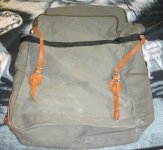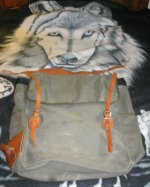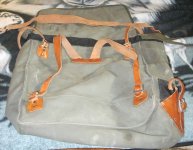So, Christine got me a canvas pack for my birthday, which is still a month away, but I need to see how it will work for me before the Marshall Lake trip.
It is a Woods 200 complete with tump. It looks like I will be able to eliminate one of our Eureka canoe packs with it. So Robin, how do I go about water proofing this beast? I know it won't be watertight like the canoe packs. Do you use a liner to keep stuff dry inside? I bought some water proofing spray last year for my rain gear, could I use that or is there a better way to treat the canvas?



It is a Woods 200 complete with tump. It looks like I will be able to eliminate one of our Eureka canoe packs with it. So Robin, how do I go about water proofing this beast? I know it won't be watertight like the canoe packs. Do you use a liner to keep stuff dry inside? I bought some water proofing spray last year for my rain gear, could I use that or is there a better way to treat the canvas?




